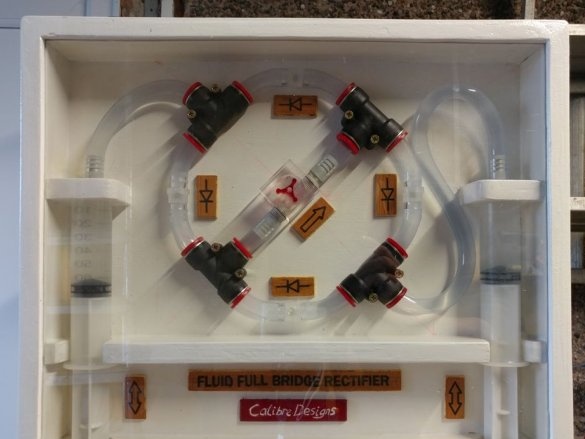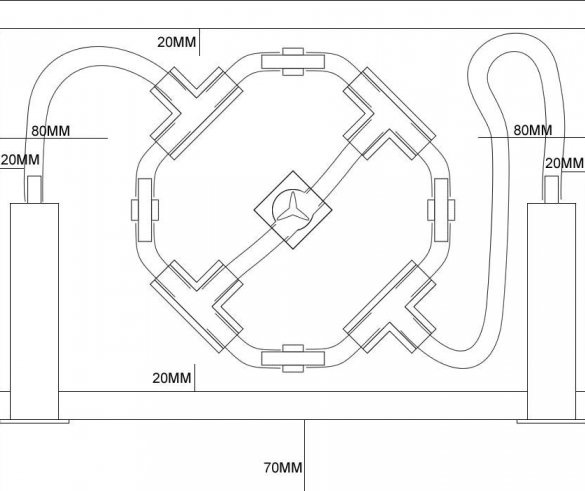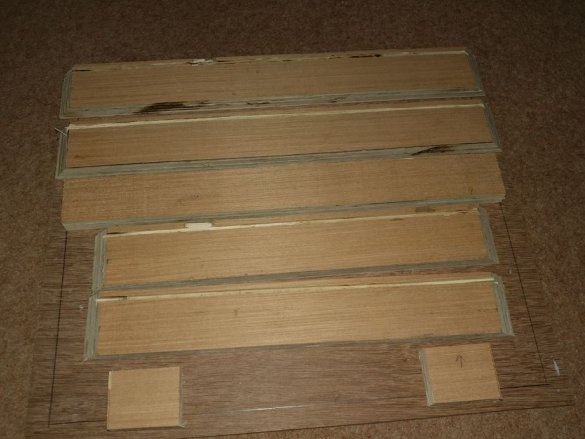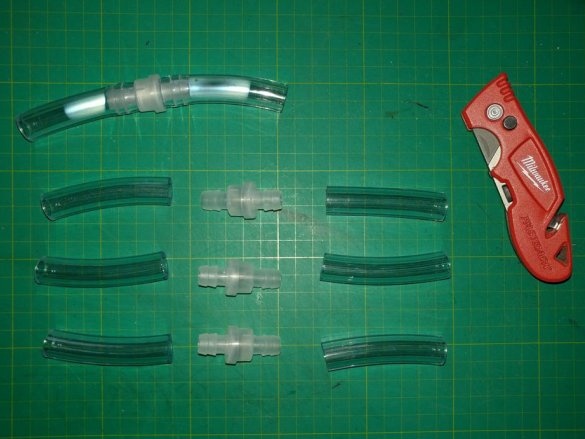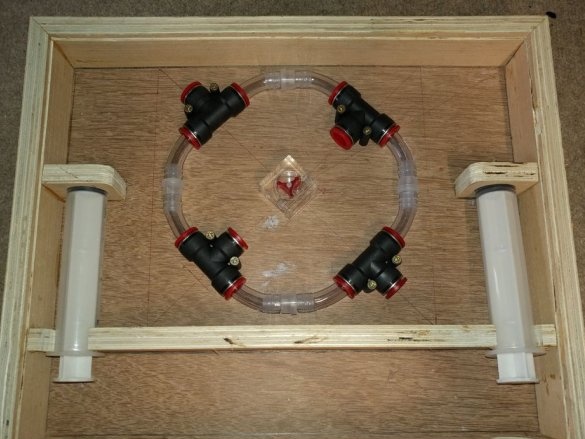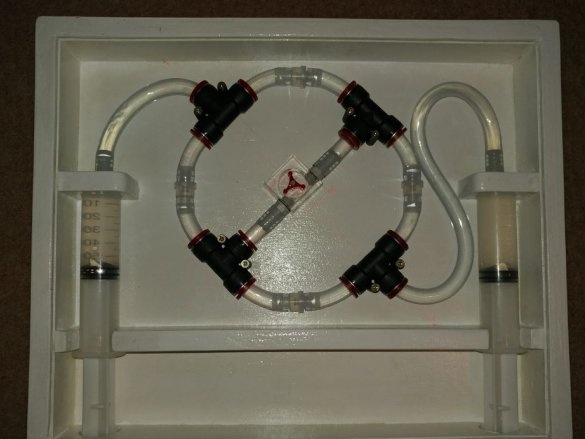The author of Instructables under the nickname Shadow Of Intent offers a simple visual aid that can explain to anyone how the electric rectifier bridge works using hydraulic analogs of the components used in it. To make such homemade in any school, it’s nice to highlight a few extra-curricular activities in the office of work, and bring the result to the office of physics, adding a poster with the following two pictures:
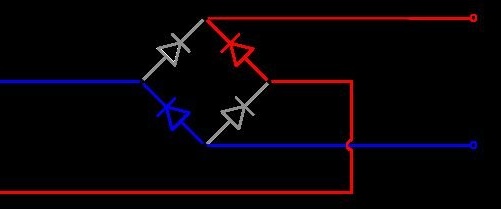
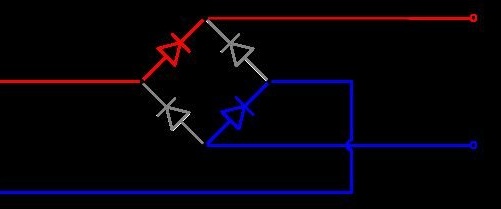
The device consists of the following components: two large syringes without needles, hoses, four tees, four check valves of the car windshield washer (these are mechanical analogs of diodes, only with very funny speed, replacing them with aquarium ones is undesirable, since they are designed for switching the flow air, not water), as well as a visual indicator of the flow of water with an impeller, there are many varieties of them, they are used even in computer water cooling systems. The following is a diagram of the device:
The body of the manual can be made from plywood or MDF (and also from plexiglass, it will generally look like a block from a spacecraft), the master makes its details:
It cuts the tubes in size, tries to connect two of them with one of the check valves:
Assembles a case from previously manufactured parts and installs components in it, but does not fully perform the connections, as long as it checks to see if the dimensions of the case parts are correct:
Then it parses everything, after which it polishes and paints the case. And collects this time completely.
With a small laser engraver, the master applies diode designations to the plates, as well as the direction of flow through the indicator:
Glues the tablets, fills the system with water, and the manual is ready. At first, the master was afraid that it would not work, but the fears were in vain. Everything worked right away. In the video, the device is shown with a sheet of plexiglass closed in front, this is optional, but it will protect the components and internal walls of the case from dust.
Such a master turned out to be an interesting visual aid, which allows one to understand how the rectifier bridge works, even to someone who has never seen him before.

